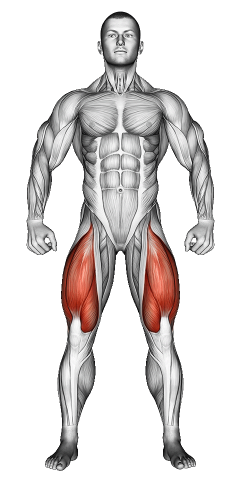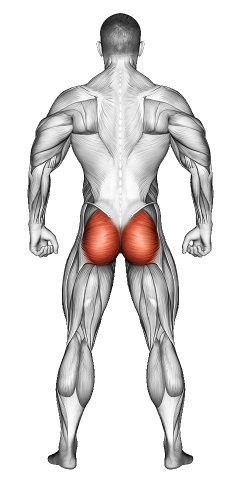Bodyweight Squat Pulse: Video Tutorial & Exercise Guide

Written By: Claude Michael
Updated: Oct 13, 2024
| Workout | Bodyweight Squat Pulse |
| Primary Muscle Group | Quads |
| Secondary Muscle Group | Calves, Glutes |
| Equipment Required | Bodyweight |
| Force Type | Push |
| Mechanics | Compound |
| Exercise Type | Strength |
| Difficulty | Intermediate |
Bodyweight Squat Pulse: Video Tutorial & Exercise Guide
- 1.Bodyweight Squat Pulse: Muscle Groups
- -1.1Primary Muscle Group
- -1.2Secondary Muscle Group
- 2.Bodyweight Squat Pulse: Step-by-Step Guide
- 3.Bodyweight Squat Pulse: Overview
- 4.Bodyweight Squat Pulse: Benefits
- 5.Bodyweight Squat Pulse: Pro Tips & Advanced Techniques
- 6.Bodyweight Squat Pulse: Progression Plan
- 7.Bodyweight Squat Pulse: Frequently Asked Questions (FAQs)
Bodyweight Squat Pulse: Step-by-Step Guide
- Step 1: Stand with your feet shoulder-width apart, toes pointing slightly outward. Keep your chest up and engage your core for stability.
- Step 2: Begin by lowering your body into a squat position, bending at your hips and knees until your thighs are parallel to the floor. Make sure your knees stay in line with your toes and don’t cave inward.
- Step 3: Once you reach the bottom of the squat, instead of standing back up, pulse up and down by lifting yourself a few inches and lowering back down, keeping the movement small and controlled.
- Step 4: Continue pulsing for the desired number of reps or time, focusing on maintaining tension in your legs and glutes.
- Step 5: After completing the pulses, stand back up to the starting position to finish the set. Reset your form and repeat as necessary.
Bodyweight Squat Pulse: Overview
The bodyweight squat pulse is an excellent lower-body exercise that targets your quadriceps, glutes, and hamstrings while keeping continuous tension on your muscles. By performing short, pulsing movements in the squat position, you can build endurance, strengthen your lower body, and improve muscle tone.
This exercise is a great addition to any bodyweight workout routine, especially when you’re looking to increase the intensity without using weights. It’s a simple but effective movement that can be modified for all fitness levels and performed anywhere.
Bodyweight Squat Pulse: Benefits
The squat pulse helps strengthen and tone the muscles in your legs and glutes, particularly your quadriceps and gluteus maximus. The continuous tension created by the pulsing movement increases muscle endurance and promotes muscle growth without adding weights.
This exercise also helps improve lower-body stability and balance, making it beneficial for athletes and anyone looking to enhance functional strength. Since it places less stress on the knees than traditional squats, squat pulses are a great alternative for individuals with knee sensitivities or injuries.
Additionally, bodyweight squat pulses can be used as a burnout exercise at the end of a workout to push your muscles to their limits, making it a versatile and challenging addition to your routine.
Bodyweight Squat Pulse: Pro Tips & Advanced Techniques
Keep your core engaged throughout the movement to maintain stability and prevent rounding your back. Focus on small, controlled pulses to maximize the tension on your muscles rather than bouncing up and down. For an added challenge, hold a static squat at the bottom position for a few seconds before starting your pulses. Ready to feel the burn? Let’s pulse!
Bodyweight Squat Pulse: Progression Plan
Beginner
Intermediate
Advanced
Bodyweight Squat Pulse: Frequently Asked Questions (FAQs)
What muscles do Bodyweight Squat Pulses target?
+Squat pulses primarily target the quadriceps and glutes, while also engaging the hamstrings and core muscles to help with stability during the movement.
Can beginners perform squat pulses?
+Yes, squat pulses are suitable for beginners as long as proper form is maintained. Start with fewer pulses and focus on controlling your movement before progressing to more advanced variations.
How can I make squat pulses more challenging?
+To increase the difficulty, you can add resistance by holding a dumbbell or kettlebell at chest level. You can also try increasing the duration of the pulses or incorporating them into a superset with other lower-body exercises.
How often should I include Bodyweight Squat Pulses in my workout routine?
+Squat pulses can be included 2-3 times per week as part of your leg day or lower-body workouts. They can also be added as a finisher to burn out your leg muscles at the end of a session.
What common mistakes should I avoid when doing squat pulses?
+Avoid letting your knees cave inward or rounding your back. Keep your chest up, core tight, and ensure your knees stay aligned with your toes throughout the movement for proper form and maximum benefit.
Share
Don’t Wish for It, Work for It – Join the FlexXP Newsletter Today!
Thank you for signing up for the FlexXP Newsletter!
This site is protected and the Google Privacy Policy and Terms of Service apply.


